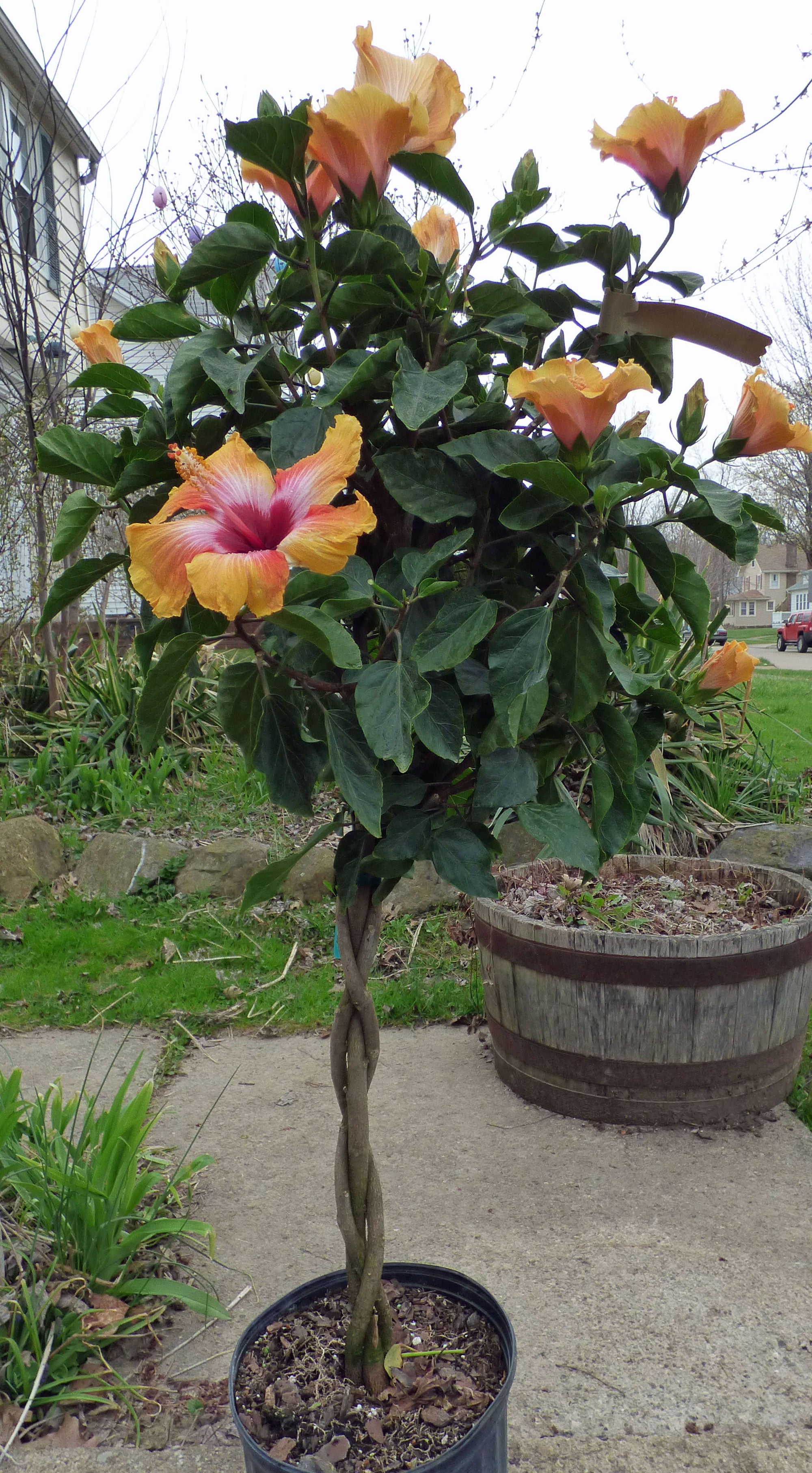What Is A Braided Hibiscus: Tips For Creating And Growing Braided Hibiscus Trees


Hibiscus plants bring a tropical feel to the garden or interior. There are hardy hibiscus varieties but it is the Chinese, or tropical, variety that produces the lovely small trees with braided trunks. The braided hibiscus topiary forms a slender trunk with a closely cropped ball of foliage at the top.
The plant will produce the large, deep throated flowers for which hibiscus are noted. Braided plants can be costly and take years to mature in a greenhouse. When you know how to form a hibiscus braided tree, you can save money and have the satisfaction of creating a beautiful plant work of art.
What is a Braided Hibiscus?
Tropical Chinese hibiscus is suitable for USDA plant hardiness zones 9 and 10 but makes excellent patio plants in summer where temperatures are cooler. Bring the plants indoors and they will reward you with flowers in winter. Most forms are small shrubs to diminutive plants, no taller than 5 to 6 feet (1.5-2 m.) tall.
What is a braided hibiscus? These forms are made up of several young Chinese hibiscus trees which have had their stems trained together early in their growth. Growing braided hibiscus trees from these young plants takes several years and some maintenance, but it is not difficult to make a braided hibiscus topiary.
How to Form a Hibiscus Braided Tree
First you need to get your hands on four young trees with stems no thicker than a pencil. At this size the plants are usually just less than 2 feet (61 cm.) tall and have small, but well formed, root systems. You can get the plants from cuttings that you grow, at a nursery, or online.
Plant all four little plants in a deep pot as closely together as possible, then you simply take the slender stems and lay them one over the other. Start with the two outside and twist them together once. Then add the third, twist, and then the fourth. Continue the process until you have looped all the stems together up to the top foliage. Tie them together lightly at this point.
Braided Hibiscus Care
The plant's canopy needs shaping after you braid the stems. Prune out straggly stems until it has a round appearance. Over time, you will need to continue to prune to keep the shape. Place the plant in bright sun with protection from high heat at midday. Braided hibiscus care for the next few years consists of plenty of water. They may need water every day in summer, but halve the applications in winter. In spring, fertilize with a diluted plant food and give the plant a haircut.
Sign up for the Gardening Know How newsletter today and receive a free copy of our e-book "How to Grow Delicious Tomatoes".
Early spring or late winter, before the plant is actively growing again, is the best time to trim stems and regain the shape. Repot the plant every three years in good houseplant soil. If you want to bring the plant outside, gradually introduce it to brighter light over a week or two. Make sure you bring your braided hibiscus topiary inside before cold temperatures arrive.

Bonnie Grant is a professional landscaper with a Certification in Urban Gardening. She has been gardening and writing for 15 years. A former professional chef, she has a passion for edible landscaping.